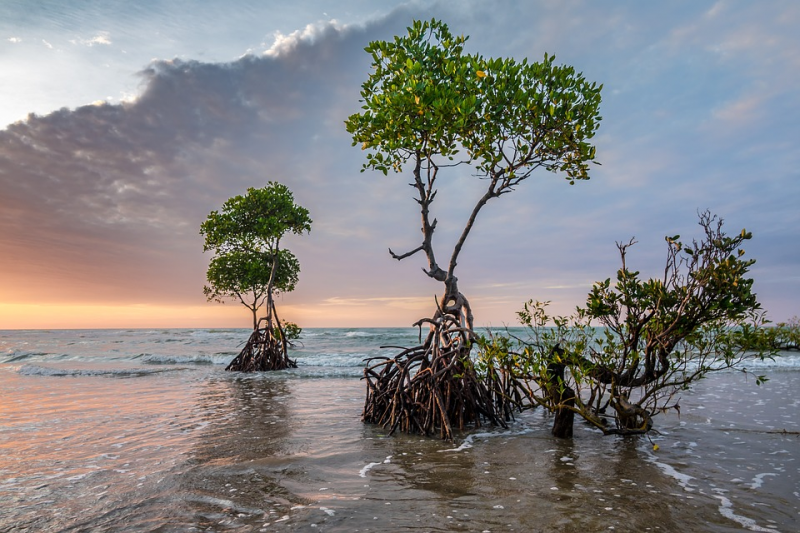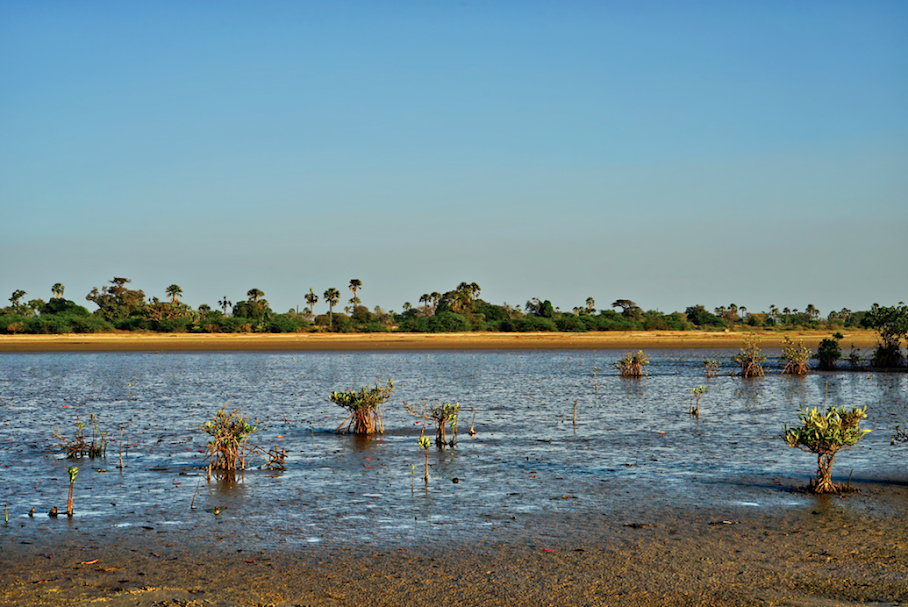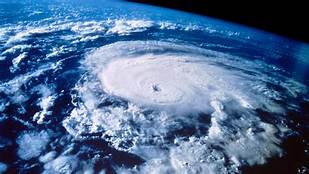Sri Lanka’s trauma of tsunami turns into a defence for tomorrow 
SRI LANKA – It is hard to imagine that only 14 years ago Sri Lanka was severely devastated by the tsunami, triggered by a 9.0 magnitude earthquake in the Indian Ocean. Its waves submerged the southwestern part of Sri Lanka, killing tens of thousands and destroying the infrastructure. But there is a lesson to be learnt here. Had Sri Lankans realised that through the destruction of a natural form of defence by chopping down the mangroves, it is unlikely they would have taken this course of action. For today, Sri Lankans are resolute about one thing when it comes to the protection of their environment: mangroves have to grow, have to be nurtured and have to be respected to protect this invaluable ecosystem.
READ MORE AFRICA
An illustrated guide to Senegal’s remarkable mangrove estuary available

SENEGAL – Siné-Saloum Delta: an illustrated guide to Senegal’s remarkable mangrove estuary is a new, freely-available educational resource to learn about the wonders of this West African mangrove ecosystem. Join us on a photographic journey through this arid coastal region and explore the estuary’s formation, geologic history, mangrove ecology, food webs, hypersalinity, community activities, and more! This informational ebook offers an illustrated overview of the mangroves of the Siné-Saloum Delta, in Senegal. With its beautiful photography and vivid narrative, this book describes the fascinating elements of this estuarine system. The authors hope this book can be a valuable resource for those who live and work in the Siné-Saloum Delta and also offer a larger global audience insight into this unique coastal system. This book was written and self-published by Jeffrey Chatellier and Zoë Shribman, and features a foreword written by Dr. Marie-Christine Cormier-Salem. READ MORE
Sierra Leone launches US$10 million coastal resilience project

SIERRA LEONE- In an effort to achieve its Nationally Determined Contributions to the Paris Agreement on climate change and the bold goals outlined in the 2030 Agenda for Sustainable Development to end poverty and hunger worldwide in the next 12 years, known as the Sustainable Development Goals or SDGs, the Government of Sierra Leone launched a new project today that will build resilience for its coastal residents and employ cutting-edge ecosystem-based approaches to restore mangrove habitats and protect against rising seas, rising temperatures and uncertain climate futures. Almost half of Sierra Leone’s 530-kilometer-long coastline is protected by mangrove forests. But with few economic options, the forests have been decimated to collect wood for burning, while beaches and dune areas are being destroyed by illegal sand and stone mining operations. READ MORE
Top takeaways from mangroves expert on community restoration

KENYA – Salomão Bandeira is a marine botanist at Eduardo Mondlane University in Maputo, Mozambique, with expertise on mangrove and seagrass ecosystems. As a practitioner, Bandeira looks beyond ecology to broader issues such as community engagement in restoration activities. He is a member of the West Indian Ocean Mangrove Network, and he has also been involved in drafting the mangrove management action plan for the country. He discussed some of what he has learned about making reforestation work for forests and communities around African coastlines and beyond with Landscape News in the run-up to the upcoming Global Landscapes Forum (GLF) in Nairobi. “There’s always this idea of, ‘Oh, restoration is just planting,’ but I think it’s actually a combination of things. You need to understand the root causes that brought the degradation in the first place, and then evaluate the need for restoration,” he said. READ MORE
ASIA
Tiny pests eating up Mumbai’s mangroves

INDIA – Mangrove forests, which should flourish during the monsoon months of August and September, have been wearing a dry, skeletal look across the Mumbai Metropolitan Region (MMR) for more than a decade. Puzzled by the phenomenon, and worried if it may affect the growth and expansion of mangrove forests, the mangrove cell of the Maharashtra forest department reached out to Bengaluru’s Institute of Wood Science and Technology (IWST). “We were clueless about why the trees looked completely dry, and why its skeletal structure was visible during this time of the year,” said N Vasudevan, additional principal chief conservator of forest, state mangrove cell. IWST’s preliminary results, based on field visits to mangrove forests in Airoli and Ghansoli, along the Thane-Vashi creeks, found 14 pests — seven species of caterpillars (Lepidoptera), two beetle species (Coleoptera), one leaf miner (Lepidoptera), two species of snails and three grasshoppers (Orthoptera) — were responsible for the destruction. READ MORE
World’s mangroves struggling to survive

PHILIPPINES – The remaining mangrove ecosystem the world over is facing serious destruction, much of which may be irreversible. This sad assessment greeted the International Day of Mangroves on July 26, from marine biologists and environmentalists worldwide who are studying the effects of human activities on mangrove forests. More than 35 percent of the world’s mangrove forests have been lost in the past two decades, losses that exceeded those for tropical forests and coral reefs, deplored Dr. Ivan Valiela, professor of biology at the Boston University Marine Program and American Institute of Biological Sciences. That is not all. Close to 40 percent of the remaining mangrove forests suffer from human alterations that were caused by conversion of mangroves to mariculture, agriculture and urbanization, as well as forestry uses and the effects of warfare, Valiela revealed. READ MORE
AMERICAS
When it comes to carbon storage, not all mangroves are equal

USA – Mangroves are carbon warriors. These salt-tolerant forests of trees and shrubs are known to lock away far greater amounts of atmospheric carbon dioxide than any other terrestrial forests, forming some of the most carbon-rich ecosystems on Earth. But not all mangroves store carbon the same way. A new study has found that where a mangrove forest grows determines how much carbon it socks away. While mangroves generally occur at the interface of land, sea and rivers, the coastal environments in which they grow can vary widely. These settings influence a number of processes, from the amount of nutrients that gets deposited in the soil to how much organic matter gets decomposed, among other things. Now, for the first time ever, a team of researchers has taken into account these differences to estimate mangrove forests’ storage of so-called blue carbon in their soil. Blue carbon is the carbon that’s stored in the ocean or coastal ecosystems, including mangroves. READ MORE
EUROPE
Mangrove expansion, climatic warming may help ecosystems keep pace with sea level rise

U.K. – Sea level rise and extreme weather events have become harsh realities for those living along the world’s coasts. The record-breaking hurricanes of the past decade in the United States have led to staggering tolls on coastal infrastructure and communities, leading many local governments to consider the benefits of natural coastal barriers. In a landmark study titled “Warming accelerates mangrove expansion and surface elevation gain in a subtropical wetland” a team of Villanova University biologists have documented that coastal wetlands in the southeastern United States are responding positively to rising temperatures both in their growth and in their ability to build soil to keep pace with sea level rise. Published August 29 in the British Ecological Society’s Journal of Ecology, the study’s results are a ray of sunshine in the climate change forecast. READ MORE
OCEANA
Defending Tuvalu’s coasts from the impacts of climate change

TUVALU – Officially launched by the Prime Minister of Tuvalu on August 30 2017 in the capital of Funafuti, the Tuvalu Coastal Adaptation Project, implemented by UNDP, is set to shore up Tuvalu’s coastal defenses in the face of rising sea levels and storm surges driven by climate change. The Tuvalu Coastal Adaptation Project, set to run for seven years, is financed with US$36 million from the Green Climate Fund and $2.9 million from the Government of Tuvalu. “Some time ago a little girl on the island of Nanumea asked me: ‘Prime Minister what can you do to save me? How can you ensure I can continue living on my island?’ That question struck at the bottom of my heart. It has become my mission and must be the mission that every Tuvaluan to paddle together to.” said Prime Minister Enele Sopoaga, at the launch event. “This project is the pride of Tuvalu. Its implementation is based on strong partnership with island leaders and communities, and with our partner UNDP we will paddle together to build resilience…” READ MORE
Planting mangroves in South Pacific

FIJI – THERE is no other intention of villagers of Nacula on Yasawa but to plant as much mangroves so their future generation get to enjoy the sea delicacies they are enjoying.
And useful initiatives such as mangrove planting are something villagers never take for granted because it is not just for their benefit. They believe they are doing something which will help restore the slow-dying ecosystem given the sudden trend of climate change effects.
With various consultations being held across the country on the effects of climate change, these villagers are leaving no stone unturned and are taking every single useful initiative seriously because they do not want to lose the beauty of their environment nor do they want their future generation to suffer in years to come. READ MORE


























